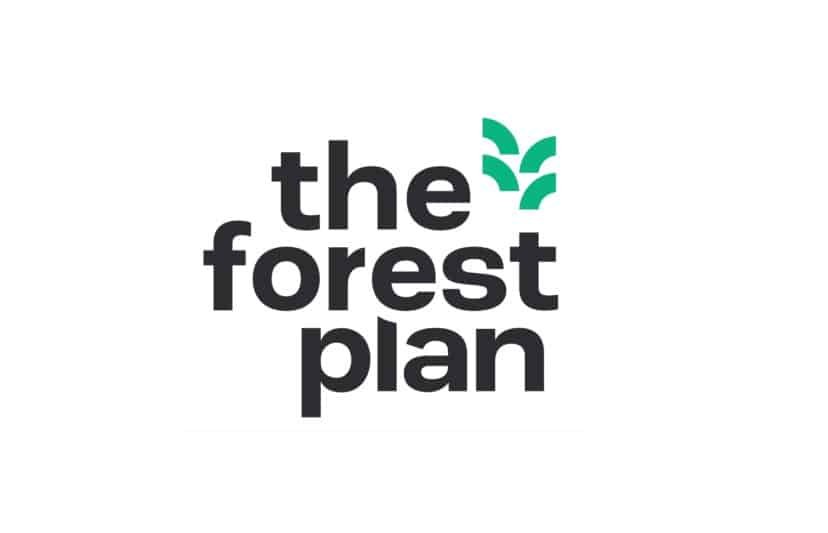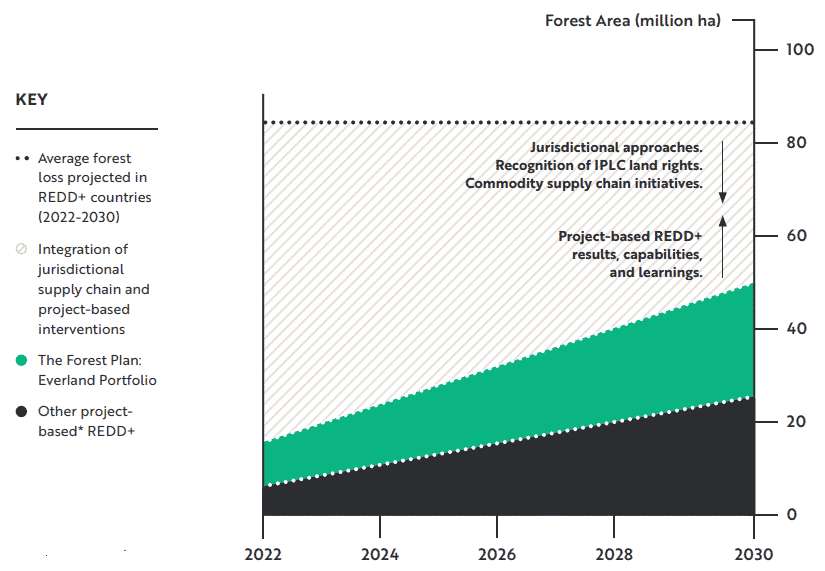Everland unveiled “The Forest Plan” to end deforestation by developing up to 75 forest conservation (REDD+) projects around the world.
Everland represents the world’s largest portfolio of high-impact forest conservation (REDD+) projects. They’re particularly found in Southeast Asia, Africa, and Latin America.
It brings forest communities and corporations together for a common cause:
to protect the world’s most important and vulnerable forests.
The Forest Plan is Everland’s response to pledges made by 141 countries at the UN Climate Change Conference (COP26).
It’s a time-bound action plan that marks Everland’s commitment to ending deforestation, the leading cause of climate change, by 2030.
The company will scale the resources available to conserve forests through the plan.
Everland’s Forest Plan: The Data-Driven Solution to Deforestation
The Forest Plan is the largest single voluntary carbon finance initiative to date. It has over $2 billion for 10-year commitments to REDD+ projects and communities.
A Community Relations Officer from the Kasigau Corridor REDD+ Project in Kenya noted during the plan’s launch:
“Without a doubt, the REDD+ mechanism has brought sustainable livelihoods into our communities where there are now jobs, opportunities for building sustainable community-based enterprises, and funding for schools and healthcare facilities.”
The plan is a science- and experience-based approach focusing on tackling the root cause of deforestation.
It seeks to use data to form an effective response to two urgent planetary challenges: the climate crisis and the loss of biodiversity. Everland forest plan will do so with speed and scale.
The plan has been shaped by respected experts and community leaders from around the world. In particular, it will help the development and long-term financing for up to 75 REDD+ projects in threatened forests.
Here’s the plan’s outlook for REDD+ projects from 2022 to 2030.
The Everland’s Forest Plan serves as a call to action across four areas:
- Expanding high-impact, community-based REDD+ to its full potential.
- Enabling national and jurisdictional REDD+ programs to achieve effective results.
- Prioritizing rights of Indigenous Peoples and Local Communities (IPLCs).
- Empowering supply chain-based initiatives to end deforestation to achieve effective results.
It will further scale REDD+ financing beyond this initiative with more projects by other Everland partners.
Carbon Credits of the Plan
Under the plan, project developers, communities, and governments leading the work will generate 90 million tons of verified carbon credits each year. In total, that would be over 800 million tons by 2030.
- The community-based forest projects by Everland, plus other REDD+ projects, can protect a total of about 50.5 million hectares. This equals 17% of the projected deforestation in 15 critical forest nations.
These include Brazil, the Democratic Republic of the Congo, Indonesia, Papua New Guinea, and Cambodia.
The forest projects represented by Everland cover 23 million hectares.
The chart shows the forest area covered under The Forest Plan portfolio projects.
As per Josh Tosteson, Everland President:
“Preserving forests is central to the climate fight, yet failures on past pledges have brought us to where we are today… Perhaps more than anything else, the goal of The Forest Plan is to show that there is a legitimate, data-driven basis for hope. Through aligned, dedicated collective action and collaboration, we can, in fact, end deforestation.”
He further said that carbon emissions from tropical deforestation are far higher than expected. And with forest loss rates doubling in two decades, there’s indeed an urgency to act now.
Hence, the Forest Plan by Everland came about to quicken the actions needed to stop deforestation by the end of this decade.
For instance, it will support forest nations to achieve their Nationally Determined Contributions (NDCs) under the Paris Agreement goals.
It will also provide access to private sector resources to finance these projects in those countries.
More remarkable is the key role that businesses play in ensuring the achievement of the forest plan’s goals. They can do so by investing in the projects as part of their emission reduction targets to offset their unavoidable emissions.
Many large companies have been directing their funds to REDD+ projects that the Forest Plan supports.
But how exactly will the plan operate?
How Forest Plan Will Work
People often decide to exploit the forest or convert it for commodity crops or other uses because few alternatives are available.
This is where the REDD+ projects come in to help. Their main goal is to resolve deforestation by delivering financial proceeds to forest stakeholders for their conservation efforts.
By doing so, buyers and financiers drive resources directly to the ground level by purchasing Verified Emission Reductions (carbon credits) from the project. These carbon credits are 3rd party verified to high-quality standards.
The REDD+ projects will then deliver transformative impacts on communities and governance. And with these impacts, forest stakeholders will realize the new value that gives them incentives to protect the forests.
And so, project by project, landscape by landscape, Everland’s Forest Plan seeks to bring this model to its full potential as fast as possible. This is the plan’s core.
Everland will keep track of the progress of The Forest Plan’s portfolio against key performance indicators or KPIs targets. It will look deeply into each project’s impacts and results on communities, biodiversity, and the climate.
The Forest Plan’s aims may be lofty but they’re a part of a bigger, collective effort to end deforestation. And Everland plans to achieve it by 2030 through carbon credits generation.



